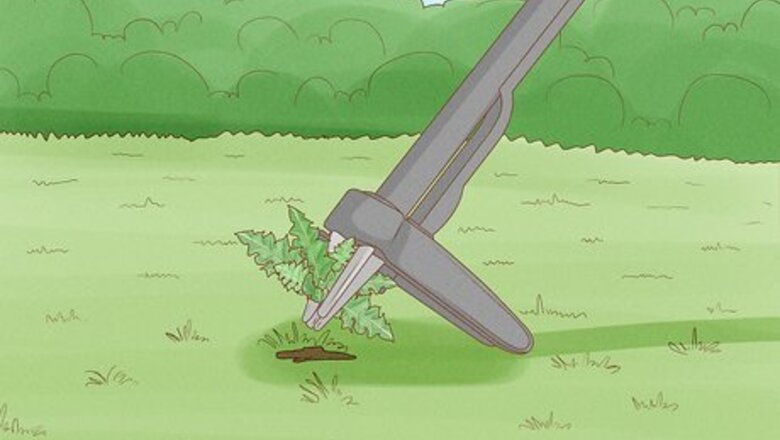
views
Use a stand-up weeder tool to uproot the individual plants.
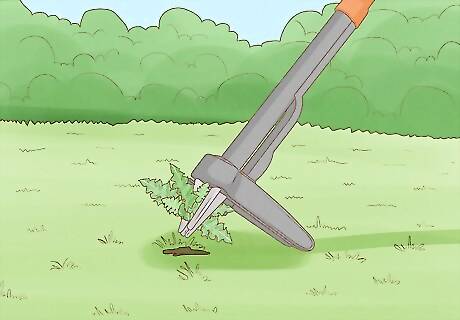
Remove the whole plant—roots and all—so it won’t grow back. A stand-up weeder is a garden tool with a metal claw attached to the end of a pole. It makes it much easier to remove thistles, which can have spiky stems and leaves. Stick the claw into the ground at the base of the thistle and lift it up to pull the entire plant and root system out of the ground. You can find stand-up weeders at your local garden supply store. Keep in mind that Canada thistle (which has sharp barbs and a purple flower) is difficult to fully uproot and any pieces of root left behind may sprout new plants.
Cover small thistle patches with plastic sheeting.

Heat the thistle roots for a few weeks to kill them off. If you have a small yard or the thistle is contained to a specific area, you can harness the power of the sun to heat the earth and kill the root system, which is the best way to make sure the plants won’t grow back. Remove as many of the thistles as you can with either a weeder or by mowing. Then, take a clear plastic sheet and place it over the area. Leave the sheet for 2–3 weeks, then remove it to allow your grass to recover. If the thistle starts to grow back after you remove the plastic sheet, you can remove them and then cover the area for a few more weeks to see if that does the trick.
Treat your entire lawn with a weedkiller herbicide.[4] X Expert Source Keith SouzaHome Improvement Specialist Expert Interview. 20 August 2021.
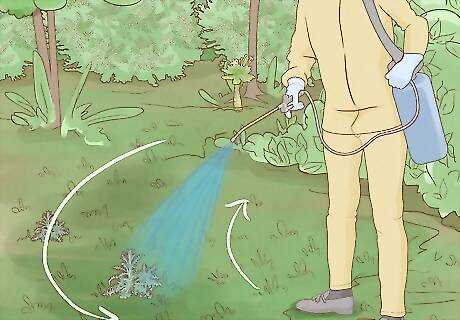
Spot spraying won’t be enough to tackle your thistle problem. If you have thistles in your lawn, chances are you have other weeds as well. Dilute a weedkiller concentrate with water according to the directions on the packaging. Apply it to your entire lawn using either a pump sprayer or a watering can. If you try to simply apply weedkiller to individual thistle plants, it likely won’t be enough to stop additional plants from growing. Treating your entire lawn will knock out most of your weeds and improve the overall appearance of your lawn in addition to taking care of your thistle problem. Weedkiller may not be enough to fully eradicate Canada thistle. If you want to use a natural alternative to get rid of thistles, use a vinegar spray. You can use a vinegar based weed spray. You can even put white vinegar in a spray bottle and use it.
Pull creeping or dwarf thistles out by hand.
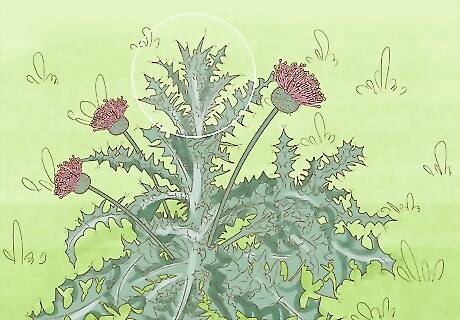
Look at the flowers to identify dwarf and creeping thistles. Creeping thistle has wavy, spiky leaves that have hairs on the undersaid as well as lilac-colored flowers. Dwarf thistles also feature spiky, wavy leaves, but they don’t have hairs on them, and the flowers are a reddish-purple color. Put on a pair of thick gardening gloves so the spikes don’t poke your skin and remove the thistle by grasping the base of the stem and pulling it from the ground along with its roots. Other types of thistles may regenerate and grow back after you pull them out by hand.
Cut nodding thistles just below the flower head.

Look for a tall thistle with pink flowers and a drooping flower head. Nodding thistle is usually pretty easy to spot. Because it only grows from seed, you can kill them by simply cutting off the flowering head. If it grows back, cut it off again. Eventually, the root system will starve and die off.
Cut Canada thistles when they’re 2–3 inches (5.1–7.6 cm) tall.
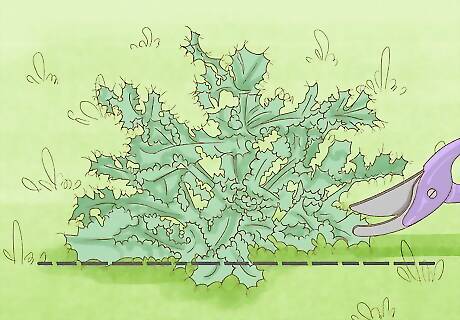
Remove just the top part of the plant to starve the roots. Whenever you do spot a Canada thistle, don’t try to pull it out of the ground or you’ll create root fragments that will sprout into new plants. Instead, just cut off the green growth above the ground. Over time, as you continually remove the new growth, you’ll starve the root systems and they’ll eventually die. This is a useful way to get rid of small patches of thistles.
Mow your lawn before Canada thistle flowers.
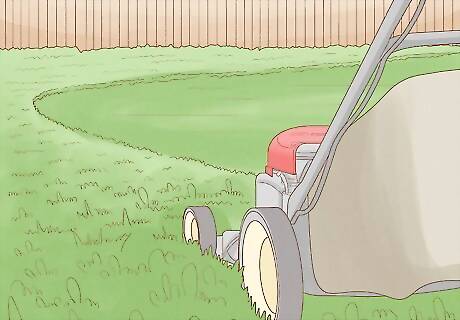
Mowing stops the growth and spread of additional plants. If you see a bunch of green thistle plants growing on your lawn, try to catch them as soon as you can. Mow your lawn before they get a chance to flower and produce seeds that will spread the weed to other areas in your yard. You can spot Canada thistle by looking for soft green, spear-like leaves with sharp barbs. When they flower, Canada thistle has a purple, pom-pom shaped flower. Mowing alone won’t be enough to get rid of the thistle, but it can help stop the spread while you work to eradicate it.
Look for new Canada thistles twice a week.

Keep an eye out for new sprouts and growth to catch them early. Because mowing doesn’t actually destroy the root system, hardy thistles like Canada thistle will eventually grow back. Take a walk through your yard at least twice a week to look for the quickly sprouting weed. Stay vigilant! If you skip a week or 2, you may find your lawn overrun with the stubborn weeds.
Plant additional grass seeds in your lawn.
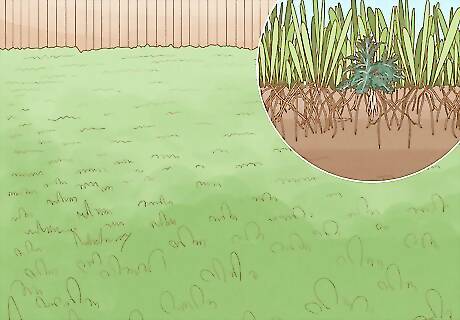
The grass will compete with the thistle and help prevent it from growing. While you’re tackling your thistle problem, try planting some additional grass seeds in your lawn. As the grass grows, their root systems will compete with the thistles and make it harder for them to grow. Eventually, they’ll help choke out new weed growth. Plus, new grass growth will make your lawn look fuller and healthier!
Aerate your lawn to reduce compaction.
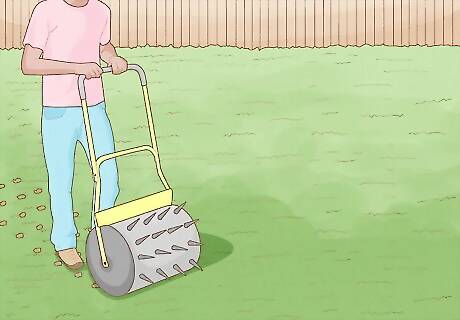
Aerating your lawn takes away the environment that weeds love. If you spend a lot of time in your yard and use your lawn often, it’s completely normal for your soil to get compacted. Compacted soil chokes out air and water and makes it difficult for your grass to grow, but it’s a dream-come-true to weeds like thistles. Use a manual or a power aerator and run it over your entire lawn to relax and aerate your soil. An aerator uses spikes to create space in the soil for water, oxygen, and nutrients to penetrate.
Fertilize your lawn at least once a year.

Give your grass the nutrients it needs to prevent weed growth. Tackling your thistle problem can take a toll on your grass, so give it some TLC. Use lawn food pellets or liquid fertilizer and mix it according to the directions on the packaging. Apply the fertilizer evenly over your lawn once a year using a sprayer or a spreader to give your grass the nutrients it needs to thrive and choke out weeds like thistles. Choose a fertilizer designed for lawn use.



















Comments
0 comment